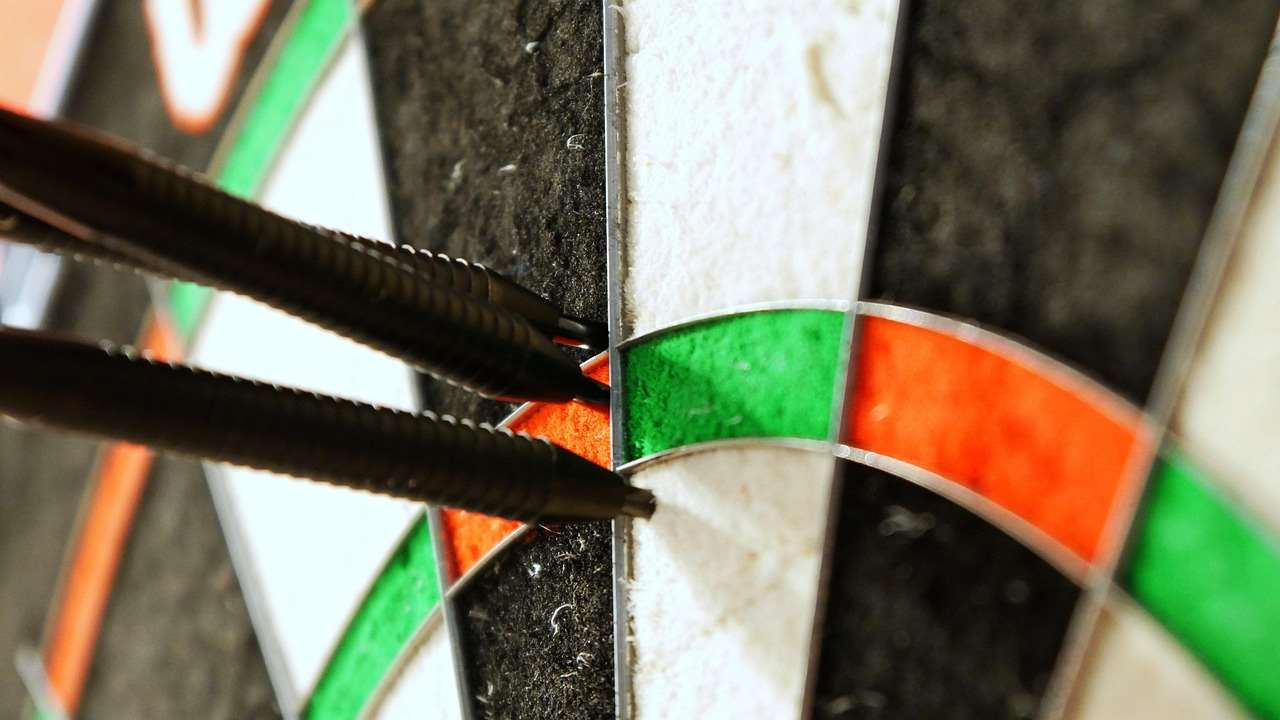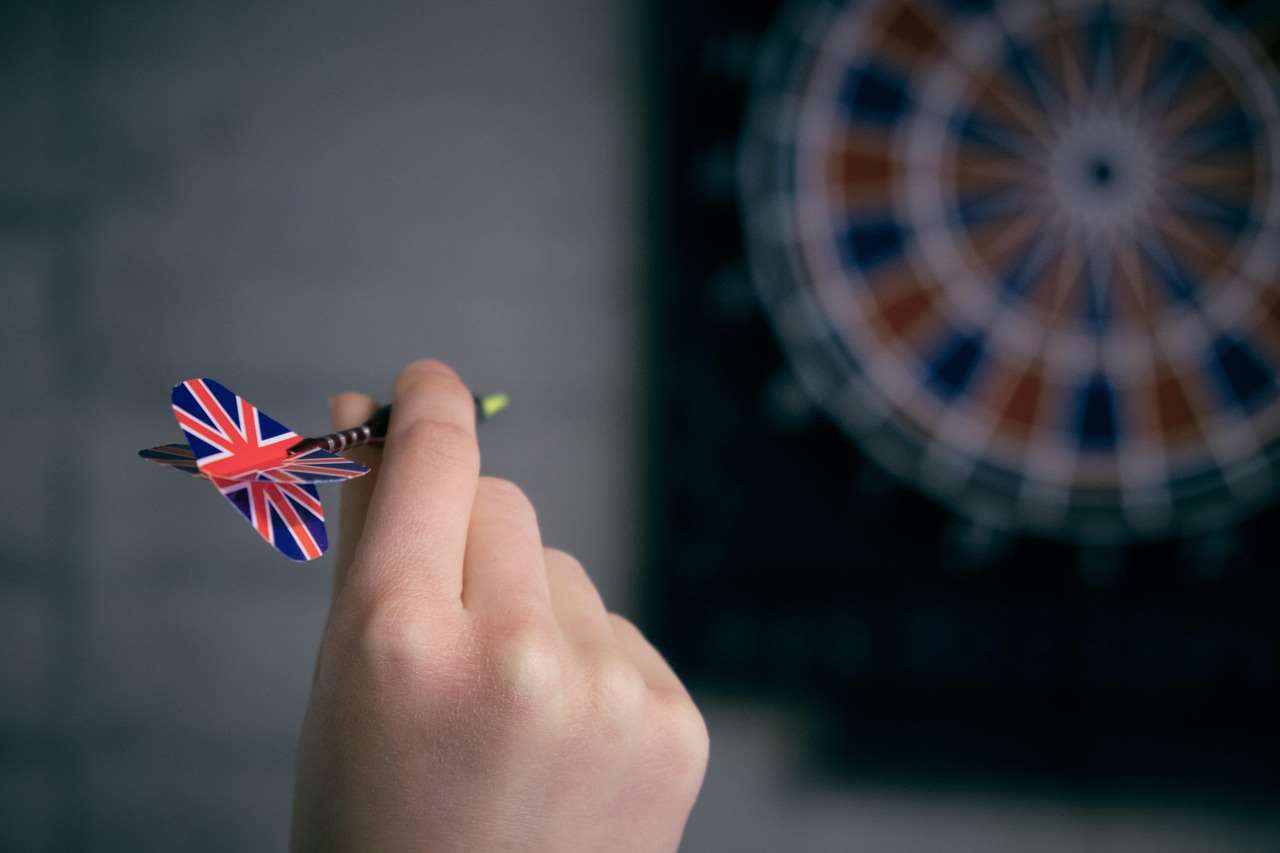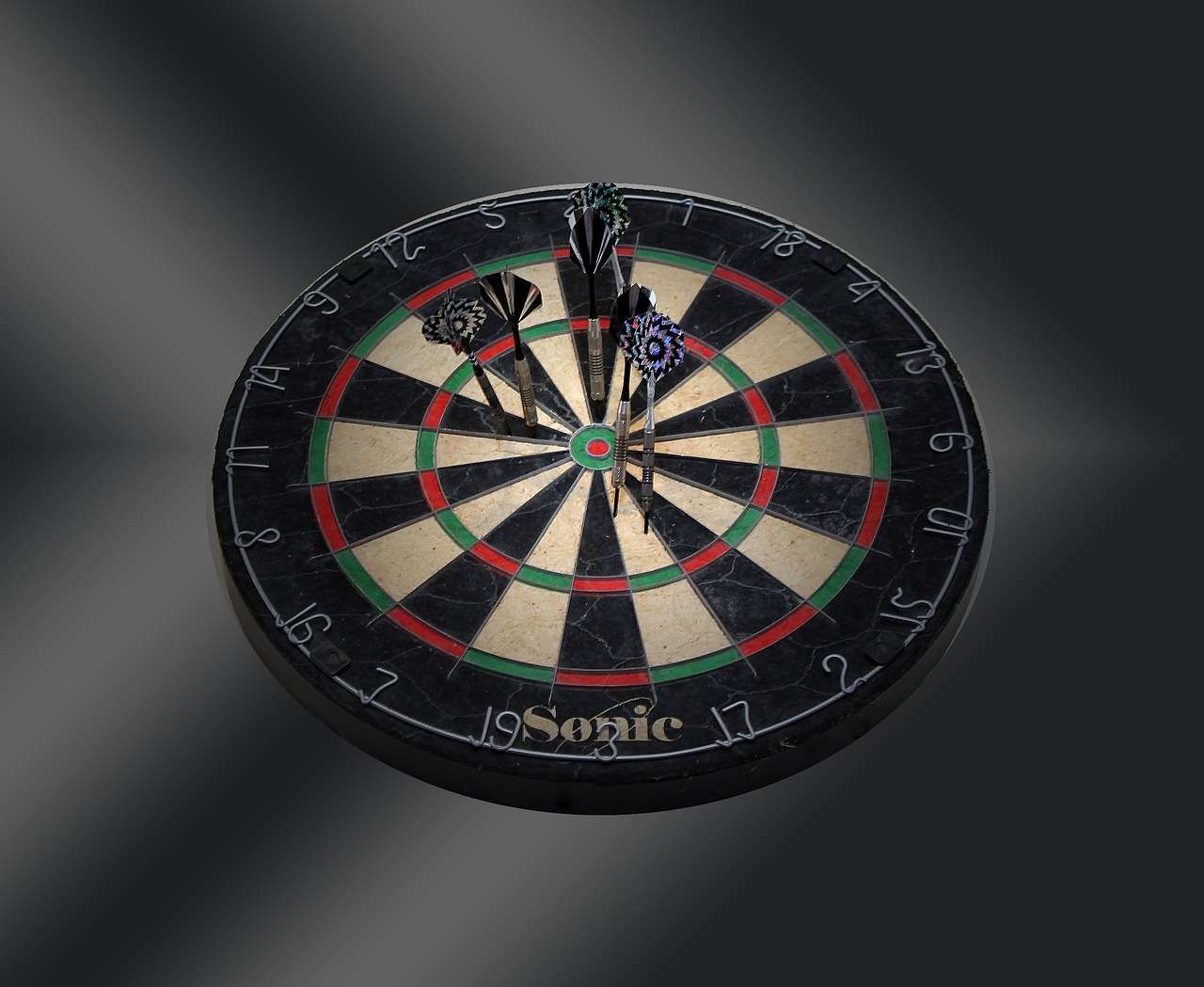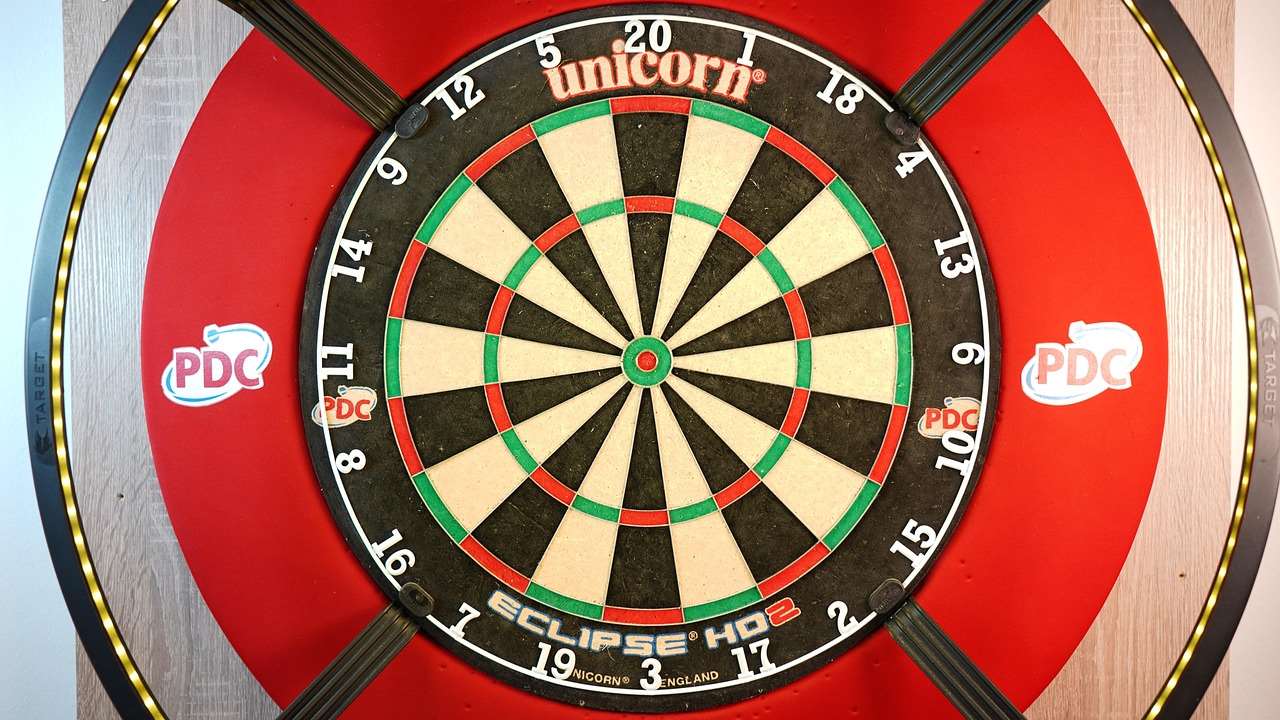The excitement of a new darts set unboxing is unmatched, promising hours of fun and potential improvement in your game. This article guides you through the perfect darts set unboxing experience, from identifying essential components to evaluating their quality and getting you ready to throw some darts. We’ll also cover crucial aspects like setting up your dartboard and tips for enhancing your overall darts setup.
⚠️ Still Using Pen & Paper (or a Chalkboard)?! ⚠️
Step into the future! The Dart Counter App handles all the scoring, suggests checkouts, and tracks your stats automatically. It's easier than you think!
Try the Smart Dart Counter App FREE!Ready for an upgrade? Click above!
The Thrill of the Darts Set Unboxing Experience
There’s something truly satisfying about opening a brand new darts set. It’s the anticipation of improved performance, the promise of countless games, and the simple joy of owning quality equipment. But a successful darts set unboxing goes beyond just tearing open the packaging. It’s about carefully inspecting each component, understanding its purpose, and ensuring it meets your standards. Before you even think about a darts score in final, you have to start with reliable equipment.

So, what exactly should you be looking for during your darts set unboxing? This guide will walk you through everything from the initial inspection to setting up your dartboard for optimal play.
Essential Components of a Darts Set
A complete darts set typically includes the following:
- Darts: Usually three darts are included. They consist of the barrel, shaft, flight, and point.
- Flights: Extra flights are often included, as these are prone to wear and tear.
- Shafts (Stems): Similar to flights, extra shafts are a welcome addition for replacements.
- Dart Case: For storage and protection of your darts.
- Flight Protectors: Small metal pieces that slide over the flights to prevent damage. (Sometimes included)
- Point Protector: A small cap to cover the dart point. (Sometimes included)
- Dart Tool: A multi-tool used to tighten shafts, adjust points, and remove broken shafts. (Sometimes included)
The quality of these components will directly impact your darts experience. We will analyze these components further.
Inspecting the Darts
The darts themselves are the most critical part of the darts set. Here’s what to look for:
- Barrel Material: Common materials include brass, nickel silver, and tungsten. Tungsten is the densest, allowing for slimmer barrels, which are preferred by many players. Brass is more economical.
- Barrel Weight: Dart weight is a matter of personal preference, but a good starting point is between 22 and 24 grams.
- Barrel Grip: Different barrel grips offer varying levels of tackiness. Experiment to find what feels most comfortable and secure in your hand. Consider a ringed grip or a knurled grip.
- Point Quality: The points should be securely attached and made of durable material. Check for any burrs or imperfections.
Consider the overall balance and feel of the darts in your hand. Do they feel comfortable and well-balanced? Do they inspire confidence?
Examining the Flights and Shafts
Flights and shafts are essential for dart stability and trajectory. During your darts set unboxing:
- Flight Material: Flights come in various materials, including plastic, nylon, and polyester. Thicker materials are more durable but can affect flight characteristics.
- Flight Shape: Common flight shapes include standard, kite, slim, and pear. Different shapes affect stability and drag. Try different shapes to find what works best for you.
- Shaft Length: Shaft length influences the dart’s angle in the air. Shorter shafts generally lead to a steeper angle.
- Shaft Material: Shafts are typically made of aluminum, nylon, or plastic. Aluminum shafts are durable, while nylon and plastic are more affordable and flexible.
- Shaft Attachment: Ensure the shafts attach securely to the barrel and that the flights fit snugly into the shaft slots.
Don’t underestimate the importance of these seemingly small components. A broken shaft or damaged flight can significantly impact your accuracy.
Evaluating the Extras: Case, Tools, and Protectors
While not as critical as the darts themselves, the included accessories can add value to the darts set unboxing experience:
- Dart Case: A good dart case will protect your darts from damage during transport and storage. Look for a case with secure compartments for each dart and accessories.
- Dart Tool: A dart tool can be invaluable for tightening shafts, removing broken shafts, and adjusting points.
- Flight Protectors: Flight protectors help prevent damage to your flights, extending their lifespan.
- Point Protector: Protects the dart points from blunting or damage, especially during transportation.
These extras can be a sign of a high-quality darts set and can make your life easier in the long run. Think of them as a bonus to the main product.

Setting Up Your Dartboard After the Darts Set Unboxing
Now that you’ve completed your darts set unboxing, it’s time to set up your dartboard. Proper setup is crucial for accurate and enjoyable gameplay. Correct setup is important to maintain fair darts scoring games.
Dartboard Height and Distance
The official dartboard height and distance are as follows:
- Height: The center of the bullseye should be 5 feet 8 inches (1.73 meters) from the floor.
- Distance: The oche (throwing line) should be 7 feet 9 1/4 inches (2.37 meters) from the face of the dartboard.
Accuracy is key here. Use a level and measuring tape to ensure your dartboard is properly positioned.
Dartboard Lighting
Proper lighting is essential for clear visibility and accurate aiming. Consider these lighting options:
- Overhead Lighting: A light fixture directly above the dartboard can provide adequate illumination.
- Dartboard Surround Lighting: A circular light that surrounds the dartboard provides even and shadow-free lighting. This is often considered the best option.
- Side Lighting: While less ideal, side lighting can work if positioned carefully to avoid casting shadows on the dartboard.
Make sure the lighting is bright enough to see the dartboard clearly without being too harsh or causing glare.
Protecting Your Surroundings
Darts can occasionally miss the dartboard, so it’s important to protect your walls and floors. Consider these options:
- Dartboard Surround: A dartboard surround is a padded ring that surrounds the dartboard, catching stray darts and protecting your wall.
- Backboard: A large piece of plywood or other material placed behind the dartboard can provide additional protection.
- Floor Mat: A floor mat can protect your floor from dropped darts and provide a comfortable standing surface.
Taking these precautions can save you from costly repairs and ensure a safe playing environment.
Choosing the Right Darts for Your Style
Your darts set unboxing might reveal a standard set of darts, but ultimately, finding the right darts is a personal journey. Here’s what to keep in mind to improve your dart game.
Experiment with Different Weights
Most players find their sweet spot between 20 and 26 grams. Lighter darts require more force, while heavier darts can be easier to control. Try different weights to see what feels most natural and comfortable for you.
Consider Different Barrel Shapes
Dart barrels come in various shapes, including:
- Straight: Consistent grip and balance.
- Torpedo: Concentrated weight in the front for easy throwing.
- Bomb: Similar to torpedo, with a more rounded shape.
The barrel shape can influence your grip and release, so experiment to find what works best for your throwing style.
Find Your Ideal Grip
The grip on your dart barrel is crucial for control and accuracy. Different grips offer varying levels of tackiness and texture. Try different grips to find what feels most secure and comfortable in your hand. If you are wondering what darts oche feet position is best for your grip, you may need a coach.
Tips for Improving Your Dart Game After the Darts Set Unboxing
Now that you’ve got your new darts set and your dartboard is set up, it’s time to improve your game. Here are a few tips to help you get started:

Practice Regularly
The key to improvement in darts, as in any sport, is consistent practice. Set aside some time each day or week to practice your throwing technique and aim. Even short, focused practice sessions can be highly effective.
Focus on Your Stance and Grip
A consistent stance and grip are essential for accurate throwing. Find a comfortable and stable stance that allows you to maintain balance and control. Experiment with different grips to find what feels most natural and secure in your hand.
Develop a Consistent Throwing Motion
A smooth and consistent throwing motion is crucial for accuracy. Avoid jerky or rushed movements. Focus on releasing the dart at the same point each time. Some might even need to darts rules triple check before playing.
Aim for Specific Targets
Instead of just throwing at the dartboard randomly, focus on aiming for specific targets. Start with the bullseye and then move on to other numbers. Visualize the trajectory of the dart and adjust your aim accordingly. You may need to 170 checkout darts meaning.
Analyze Your Throws
Pay attention to where your darts are landing and try to identify any patterns or tendencies. Are you consistently throwing high or low? Are you pulling to one side? Use this information to adjust your technique and improve your accuracy.
Join a Darts League or Club
Joining a darts league or club can be a great way to improve your game and meet other players. You’ll have the opportunity to compete against different skill levels and learn from more experienced players.

Maintaining Your Darts Set for Longevity
Your darts set is an investment, so it’s important to take care of it to ensure its longevity. Regular maintenance can help prevent damage and keep your darts performing at their best.
Clean Your Darts Regularly
Over time, dirt and grime can accumulate on your darts, affecting your grip and accuracy. Clean your darts regularly with a soft cloth and a mild detergent. Avoid using harsh chemicals or abrasive cleaners, as these can damage the finish.
Sharpen Your Dart Points
Dull dart points can lead to bounce-outs and damage to your dartboard. Use a dart sharpener to keep your points sharp and prevent these issues. Sharpen your points regularly, especially if you play frequently.
Replace Worn Flights and Shafts
Flights and shafts are prone to wear and tear, so it’s important to replace them when they become damaged or worn. Replace flights when they become torn or bent, and replace shafts when they become cracked or loose.
Store Your Darts Properly
When not in use, store your darts in a dart case to protect them from damage. A dart case will also keep your darts organized and prevent them from getting lost.
Tighten Loose Components
Over time, the components of your darts may become loose. Check your darts regularly and tighten any loose shafts or points with a dart tool.
Troubleshooting Common Dart Issues
Even with proper maintenance, you may encounter some common darts issues. Here’s how to troubleshoot them:
Dart Bounce-Outs
Dart bounce-outs can be caused by dull dart points, a worn dartboard, or an improper throwing technique. Sharpen your dart points, replace your dartboard if it’s worn, and focus on improving your throwing technique.
Dart Wobble in Flight
Dart wobble in flight can be caused by damaged flights, loose shafts, or an inconsistent throwing motion. Replace your flights, tighten your shafts, and focus on developing a smoother throwing motion.
Difficulty Grouping Darts
Difficulty grouping darts can be caused by inconsistent grip, an improper throwing technique, or mismatched darts. Experiment with different grips, focus on improving your throwing technique, and make sure your darts are properly weighted and balanced.

Advanced Strategies for Serious Dart Players
Once you’ve mastered the basics after your darts set unboxing and initial practice, it’s time to explore some more advanced strategies to elevate your game further.
Mastering Checkouts
Knowing your checkout combinations is crucial for finishing games quickly and efficiently. Practice common checkout combinations like 170, 164, and 161. Visualize the board and plan your shots accordingly. Check out this Darts scorekeeper app for your devices.
Strategic Aiming
Don’t just aim for the bullseye every time. Learn to strategically aim for different numbers on the board to set up your next shot or block your opponent. Consider the score and the remaining numbers needed to win the leg.
Mental Game
Darts is a mental game as much as a physical one. Learn to stay calm and focused under pressure. Develop a pre-throw routine to help you maintain consistency. Visualize success and believe in your ability to hit your targets.
Conclusion
A successful darts set unboxing is just the beginning of your darts journey. By carefully inspecting your equipment, setting up your dartboard properly, practicing regularly, and maintaining your darts set, you can improve your game and enjoy countless hours of fun. Remember to experiment with different darts, flights, and shafts to find what works best for you. And most importantly, have fun and enjoy the process of learning and improving. Now that you have unboxed your darts set and are ready to play, go practice and become a better player!
Hi, I’m Dieter, and I created Dartcounter (Dartcounterapp.com). My motivation wasn’t being a darts expert – quite the opposite! When I first started playing, I loved the game but found keeping accurate scores and tracking stats difficult and distracting.
I figured I couldn’t be the only one struggling with this. So, I decided to build a solution: an easy-to-use application that everyone, no matter their experience level, could use to manage scoring effortlessly.
My goal for Dartcounter was simple: let the app handle the numbers – the scoring, the averages, the stats, even checkout suggestions – so players could focus purely on their throw and enjoying the game. It began as a way to solve my own beginner’s problem, and I’m thrilled it has grown into a helpful tool for the wider darts community.